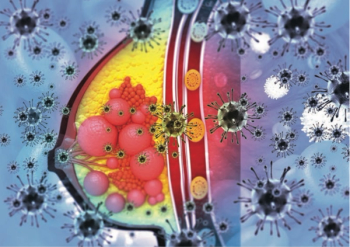
- Oncology Vol 28 No 1S
- Volume 28
- Issue 1S
(P076) Stereotactic Body Radiation Therapy (SBRT) for the Primary Treatment of Localized Prostate Cancer
We report an update of our previously published experience for primary treatment of prostate cancer with CyberKnife SBRT, assessing efficacy and toxicity.
Matthew Bernetich, Luther W. Brady, MD, Rachelle Lanciano, MD, Jun Yang, PhD; Philadelphia CyberKnife; Crozer Keystone Healthcare System; Drexel University
Introduction: The American Society of Radiation Oncology (ASTRO) model policy update, published April 17, 2013, acknowledges that stereotactic body radiation therapy (SBRT) is equivalent to standard radiation modalities used to treat prostate cancer, such as intensity-modulated radiation therapy (IMRT). Furthermore, ASTRO supports the treatment of low- and intermediate-risk prostate cancer with SBRT, where it has excellent biochemical control rates with correspondingly low rates of severe toxicity. However, only recently have 5-year data been published, with a limited sample size. We report an update of our previously published experience for primary treatment of prostate cancer with CyberKnife SBRT, assessing efficacy and toxicity.
Methods: From 2007 to 2012, 143 localized prostate cancer patients were treated with primary SBRT using the CyberKnife system. Risk groups analyzed ranged from very low (20%) and low (24%) to intermediate (43%) and high (14%). Various dose levels were used over the years of treatment and, for the purpose of this study, have been categorized into low-dose (35 Gy, n = 5 or 36.25 Gy, n = 109) and high-dose (37.5 Gy, n = 30). All treatments were delivered in five fractions. Twenty-nine percent of the patients received androgen deprivation therapy, usually administered to intermediate- and high-risk patients.
Results: At a median follow-up time of 33 months, the median PSA value was 0.30 ng/mL. The 5-year freedom from biochemical failure (FFBF) was 94.1%, 93.9%, and 82.5% for very low–/low-, intermediate-, and high-risk patients, respectively. A dose response was observed between the low-dose and high-dose groups for all patients, with FFBF of 79.8% vs 100.0% (P = .0396), respectively, and for the combined group of intermediate- and high-risk patients, with FFBF of 87.6% vs 100.0% (P = .1255), respectively. Severe genitourinary (GU) toxicities included 2% acute and 3% late toxicities. No severe gastrointestinal toxicities were observed. At last follow-up, 12% of hormone-naive patients lost the ability to achieve erections strong enough for penetration and required erectile dysfunction (ED) medication for intercourse. No hormone-naive patient who was potent before SBRT developed ED refractory to medical treatment.
Conclusion: Our experience with CyberKnife SBRT for localized prostate cancer demonstrates favorable efficacy with less toxicity compared with the outcome for IMRT as reported in the literature.
Articles in this issue
Newsletter
Stay up to date on recent advances in the multidisciplinary approach to cancer.

















































































